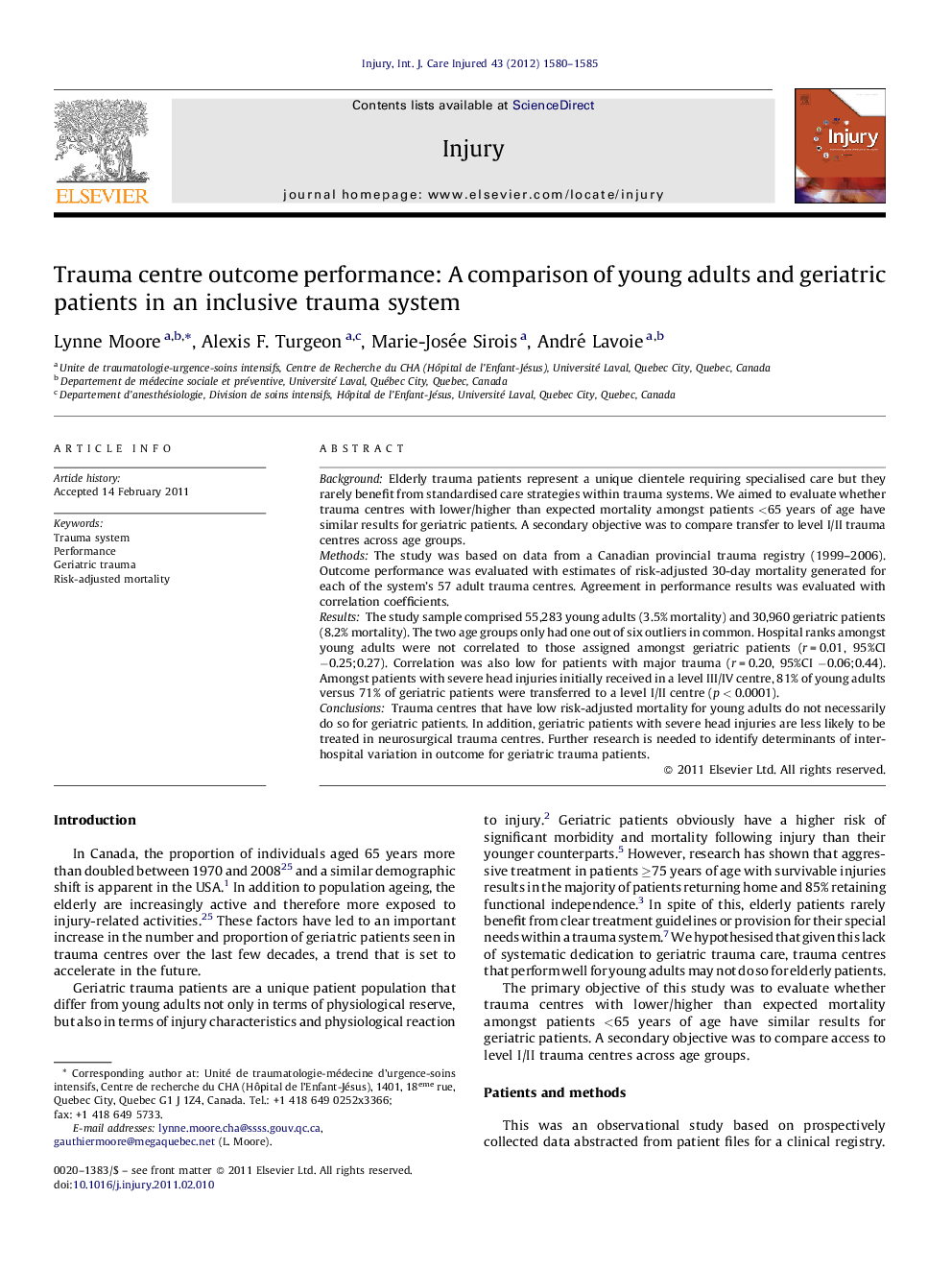| Article ID | Journal | Published Year | Pages | File Type |
|---|---|---|---|---|
| 6084542 | Injury | 2012 | 6 Pages |
BackgroundElderly trauma patients represent a unique clientele requiring specialised care but they rarely benefit from standardised care strategies within trauma systems. We aimed to evaluate whether trauma centres with lower/higher than expected mortality amongst patients <65 years of age have similar results for geriatric patients. A secondary objective was to compare transfer to level I/II trauma centres across age groups.MethodsThe study was based on data from a Canadian provincial trauma registry (1999-2006). Outcome performance was evaluated with estimates of risk-adjusted 30-day mortality generated for each of the system's 57 adult trauma centres. Agreement in performance results was evaluated with correlation coefficients.ResultsThe study sample comprised 55,283 young adults (3.5% mortality) and 30,960 geriatric patients (8.2% mortality). The two age groups only had one out of six outliers in common. Hospital ranks amongst young adults were not correlated to those assigned amongst geriatric patients (r = 0.01, 95%CI â0.25;0.27). Correlation was also low for patients with major trauma (r = 0.20, 95%CI â0.06;0.44). Amongst patients with severe head injuries initially received in a level III/IV centre, 81% of young adults versus 71% of geriatric patients were transferred to a level I/II centre (p < 0.0001).ConclusionsTrauma centres that have low risk-adjusted mortality for young adults do not necessarily do so for geriatric patients. In addition, geriatric patients with severe head injuries are less likely to be treated in neurosurgical trauma centres. Further research is needed to identify determinants of inter-hospital variation in outcome for geriatric trauma patients.
